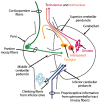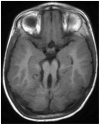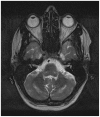Ataxia
- PMID: 27495205
- PMCID: PMC5567218
- DOI: 10.1212/CON.0000000000000362
Ataxia
Abstract
Purpose of review: This article introduces the background and common etiologies of ataxia and provides a general approach to assessing and managing the patient with ataxia.
Recent findings: Ataxia is a manifestation of a variety of disease processes, and an underlying etiology needs to be investigated. Pure ataxia is rare in acquired ataxia disorders, and associated symptoms and signs almost always exist to suggest an underlying cause. While the spectrum of hereditary degenerative ataxias is expanding, special attention should be addressed to those treatable and reversible etiologies, especially potentially life-threatening causes. This article summarizes the diseases that can present with ataxia, with special attention given to diagnostically useful features. While emerging genetic tests are becoming increasingly available for hereditary ataxia, they cannot replace conventional diagnostic procedures in most patients with ataxia. Special consideration should be focused on clinical features when selecting a cost-effective diagnostic test.
Summary: Clinicians who evaluate patients with ataxia should be familiar with the disease spectrum that can present with ataxia. Following a detailed history and neurologic examination, proper diagnostic tests can be designed to confirm the clinical working diagnosis.
Figures








References
-
- Barsottini OG, Albuquerque MV, Braga-Neto P, Pedroso JL. Adult onset sporadic ataxias: a diagnostic challenge. Arq Neuropsiquiatr 2014;72(3):232–240. doi:10.1590/0004-282X20130242. - PubMed
-
- Zeigelboim BS, Teive HA, Santos RS, et al. Audiological evaluation in spinocerebellar ataxia. Codas 2013;25(4):351–357. doi:10.1590/S2317-17822013005000001. - PubMed
-
- Whelan HT, Verma S, Guo Y, et al. Evaluation of the child with acute ataxia: a systematic review. Pediatr Neurol 2013;49(1):15–24. doi:10.1016/j.pediatrneurol.2012.12.005. - PubMed
Publication types
MeSH terms
Grants and funding
LinkOut - more resources
Full Text Sources
Other Literature Sources
Molecular Biology Databases
Research Materials
